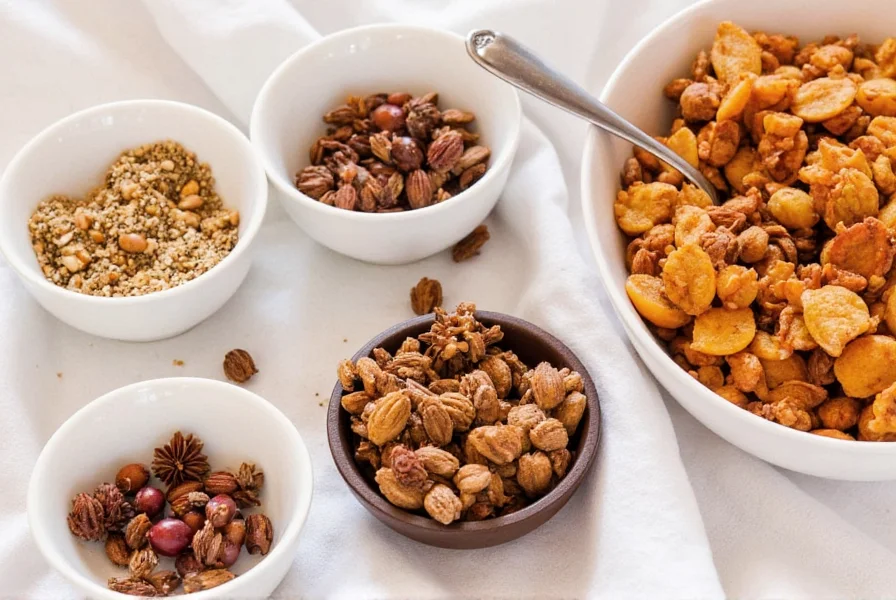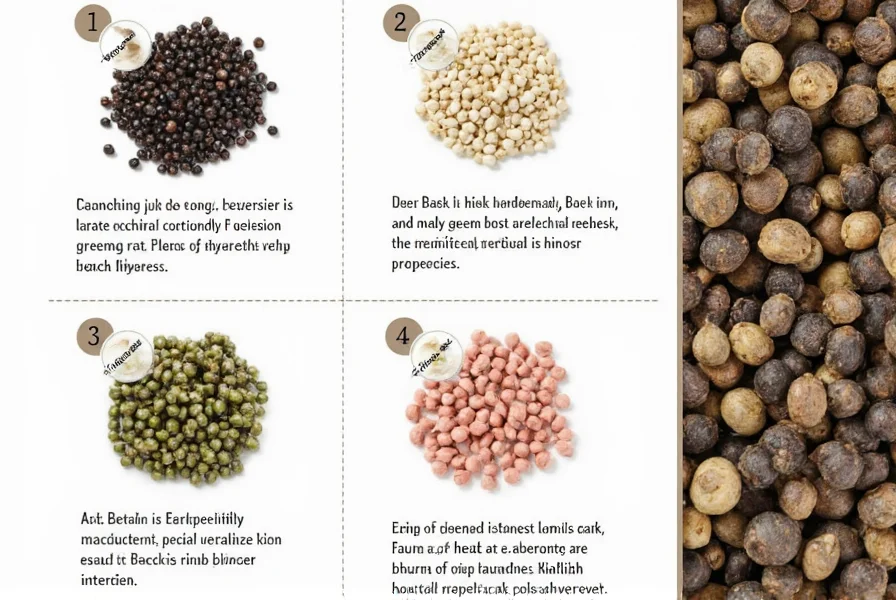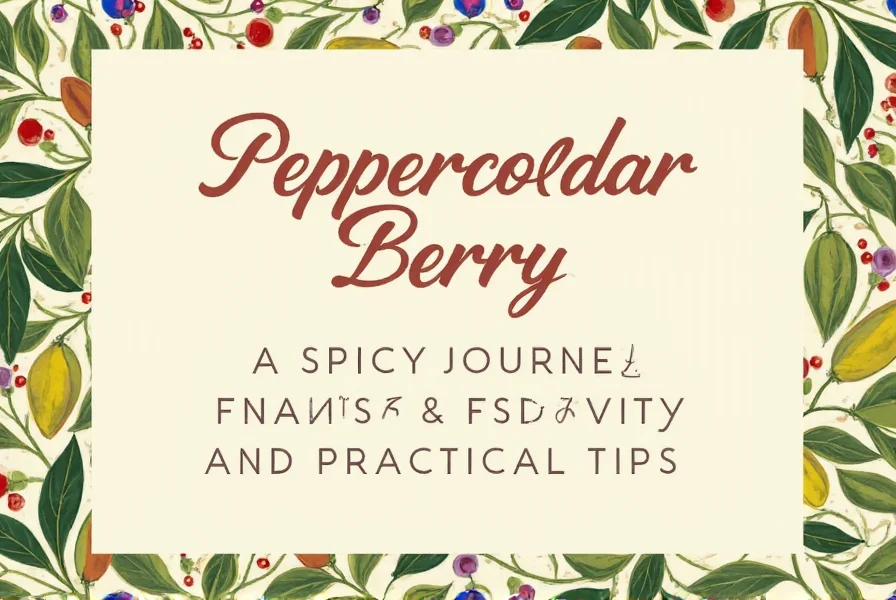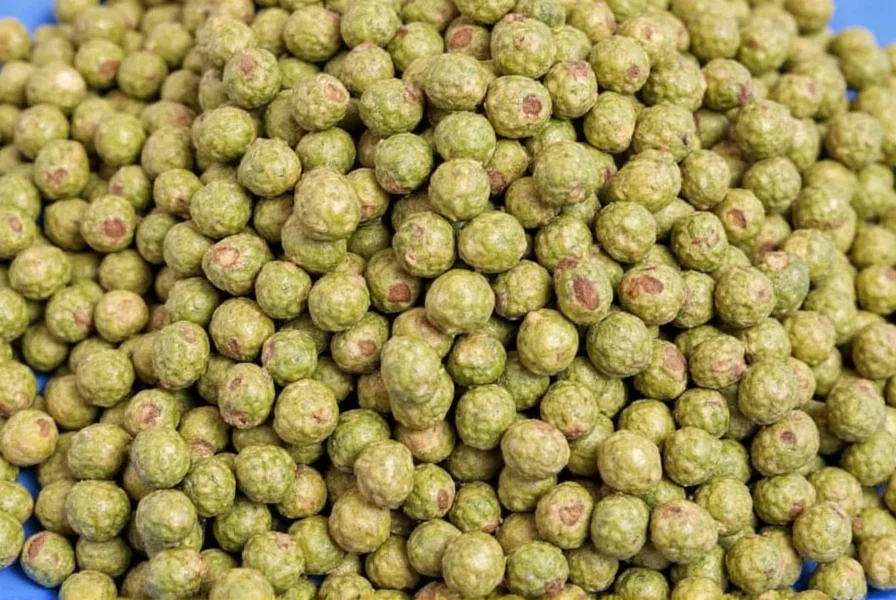Table of Contents
- What Does Peppercorn Taste Like? (The Direct Answer)
- Piperine vs Capsaicin: Why Peppercorn Heat Feels Different
- Peppercorn Flavor Profiles Compared: Black, White, Green & Red
- Freshly Ground vs Pre-Ground: Flavor Difference Explained
- Practical Tips for Maximizing Peppercorn Flavor
- Buying Guide: How to Choose Quality Peppercorns
- Frequently Asked Questions About Peppercorn Taste
What Does Peppercorn Taste Like? (The Direct Answer)
Peppercorn delivers a complex flavor profile: sharp, warming heat with distinctive citrusy notes and subtle woodiness. Unlike chili peppers that create instant burning heat from capsaicin, peppercorn's spiciness comes from piperine, producing a building warmth that spreads across your palate and lingers at the back of your throat. Freshly ground black peppercorns offer the most vibrant flavor with pronounced lemony-citrus notes, while white peppercorns provide a milder earthiness, green peppercorns deliver fresh herbal acidity, and red peppercorns present fruity complexity with less heat.

Piperine vs Capsaicin: Why Peppercorn Heat Feels Different
The heat sensation from peppercorn comes from piperine, not capsaicin found in chili peppers. This creates a fundamentally different experience:
- Piperine heat builds gradually rather than hitting immediately
- It creates a warming sensation throughout the entire mouth, particularly at the back of the throat
- The warmth lingers longer than chili heat but is less intense
- Piperine stimulates different taste receptors, creating that characteristic "peppery" sensation rather than pure burning
- It enhances other flavors in food rather than overwhelming them
This biochemical difference explains why peppercorn doesn't feel as hot as chili peppers of similar Scoville ratings, yet adds more dimension to dishes.

Peppercorn Flavor Profiles Compared: Black, White, Green & Red
Each peppercorn variety offers distinct flavor characteristics due to harvesting time and processing methods:
| Type of Peppercorn | Flavor Profile | Heat Level | Best Used In |
|---|---|---|---|
| Black | Sharp, pungent, citrusy, with floral notes and slight bitterness | ★★★★☆ (High) | Steaks, roasts, hearty stews, marinades, grilled vegetables |
| White | Mild, earthy, musty, with fermented notes and less complexity | ★★☆☆☆ (Medium-low) | Creamy sauces, mashed potatoes, light soups, seafood dishes |
| Green | Fresh, herbal, grassy, slightly acidic with subtle citrus | ★☆☆☆☆ (Low) | Salads, ceviche, vinaigrettes, poultry marinades, summer dishes |
| Red | Fruity, complex, floral, with berry notes and mild heat | ★★★☆☆ (Medium) | Fruit-based sauces, duck dishes, roasted root vegetables, specialty cocktails |

Freshly Ground vs Pre-Ground: Flavor Difference Explained
There's a dramatic flavor difference between freshly ground peppercorns and pre-ground pepper:
- Volatility of flavor compounds: Peppercorns contain essential oils that evaporate quickly after grinding. Studies show pre-ground pepper loses up to 80% of its aromatic compounds within an hour.
- Citrus notes: Freshly ground peppercorns release pronounced lemon and bergamot notes that disappear in pre-ground versions.
- Heat intensity: Fresh grinding activates more piperine, creating a more vibrant warming sensation.
- Flavor complexity: Whole peppercorns maintain their complex flavor profile for months when stored properly, while pre-ground pepper becomes flat and one-dimensional.
For optimal flavor, grind peppercorns immediately before use. A coarse grind works best for steaks and roasts, while a fine grind suits sauces and dressings. Proper storage in an airtight container away from light preserves flavor for up to 1 year.

Practical Tips for Maximizing Peppercorn Flavor
Master these techniques to enhance your dishes with peppercorn:
- Timing matters: Add black peppercorns early in cooking for deeper flavor integration, or at the end for brighter, more pronounced heat.
- Temperature control: High heat can make peppercorn bitter. Add toward the end of high-heat cooking or toast gently before grinding.
- Acid balance: Counter excessive heat with lemon juice or vinegar—they enhance peppercorn's citrus notes while mellowing the heat.
- Pairing wisdom: Combine with complementary flavors: black pepper with mushrooms and beef, white pepper with cream and fish, green pepper with citrus and herbs.
- Dosage precision: Start with less than you think you need—you can always add more, but you can't remove excess pepper.
- Special techniques: Bloom peppercorns in warm oil to release flavors, or create compound butters infused with freshly ground pepper.

Buying Guide: How to Choose Quality Peppercorns
Selecting premium peppercorns makes a noticeable difference in flavor. Here's what to look for:
Quality Indicators
- Appearance: Uniform size and color, plump berries (not shriveled), consistent hue specific to the variety
- Aroma test: Strong, pungent smell when crushed between fingers—avoid musty or dull-smelling batches
- Origin matters: Tellicherry black pepper (India), Voatsiperifery (Madagascar), and Sarawak (Malaysia) offer distinctive flavor profiles
- Freshness markers: Whole peppercorns should feel heavy for their size and crack cleanly when pressed
Top Recommended Products
- Tellicherry Extra Bold Black Peppercorns
- Why choose: Largest, most mature berries with highest essential oil content
- Flavor advantage: Complex citrus notes with balanced heat (30% more flavorful than standard black pepper)
- Best value: $8-10 for 4oz provides superior flavor-to-cost ratio
- Storage tip: Keep in dark glass jar with whole clove to preserve freshness
- Voatsiperifery Madagascar Peppercorns
- Why choose: Wild-harvested from rainforests with unique floral-citrus complexity
- Flavor advantage: Distinct blueberry and citrus notes with medium heat
- Best value: $15-18 for 2oz (use sparingly as a finishing pepper)
- Storage tip: Refrigerate after opening to preserve delicate flavor compounds
- Green Peppercorns in Brine
- Why choose: Preserved at peak ripeness for maximum fresh flavor
- Flavor advantage: Bright acidity without vinegar tang of dried versions
- Best value: $5-7 for 8oz jar (rinse before use to control saltiness)
- Storage tip: Transfer to clean jar with fresh brine after opening

Frequently Asked Questions About Peppercorn Taste
What makes peppercorn taste different from regular black pepper?
"Regular black pepper" is made from dried peppercorns, so they're the same thing. The confusion comes from pre-ground pepper losing flavor compounds. Whole peppercorns contain volatile oils that provide complex citrus and floral notes, which evaporate quickly after grinding. Freshly cracked peppercorns taste brighter, more complex, and less one-dimensional than pre-ground "black pepper."
Why does my tongue tingle when I eat peppercorn?
This tingling sensation comes from piperine activating TRPV1 receptors in your mouth—the same receptors that respond to heat. Unlike capsaicin in chili peppers that creates immediate burning, piperine produces a building warmth that spreads across your tongue and throat. The tingling indicates active piperine interacting with your taste receptors, which also enhances your ability to taste other flavors in the dish.
Do different colored peppercorns come from different plants?
No, all peppercorn colors come from the same Piper nigrum plant. The color difference comes from harvesting time and processing: black peppercorns are picked nearly ripe and sun-dried, white are fully ripe berries with outer layer removed, green are unripe berries preserved, and red are fully ripe berries dried without processing. This explains why their flavor profiles differ significantly despite originating from the same plant.
How can I tell if my peppercorns have gone bad?
Fresh peppercorns should have a strong, pungent aroma and vibrant flavor. Signs they've degraded: musty or cardboard-like smell, loss of pungency (no warming sensation), faded color, or shriveled appearance. Properly stored whole peppercorns last 1-2 years, while pre-ground pepper loses potency in 3-6 months. The ultimate test: crush one between your fingers—if it doesn't release a strong aroma, it's time to replace them.
Why do chefs always grind peppercorns fresh?
Chefs grind peppercorns fresh because 80% of the volatile flavor compounds evaporate within an hour of grinding. Freshly cracked peppercorns deliver vibrant citrus notes and complex warmth that pre-ground pepper lacks. Scientific studies show ground pepper loses measurable flavor compounds within minutes—fresh grinding provides noticeably brighter, more complex flavor with balanced heat that transforms dishes from ordinary to exceptional.
Can I substitute one peppercorn type for another?
You can substitute, but with flavor consequences. Black for white: expect more heat and visible specks. White for black: less complexity and heat. Green for black: much milder with herbal notes. Red for black: fruitier with less heat. For best results: use ¾ teaspoon of white pepper for 1 teaspoon black, or soak green peppercorns in warm water to intensify flavor when substituting. Some recipes specifically require certain types for visual or flavor reasons (white in béchamel, green in Thai dishes).










 浙公网安备
33010002000092号
浙公网安备
33010002000092号 浙B2-20120091-4
浙B2-20120091-4